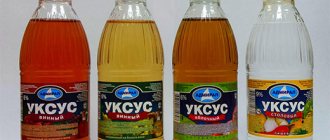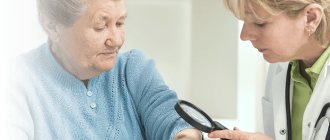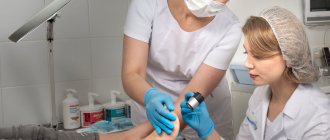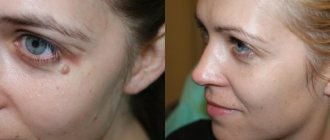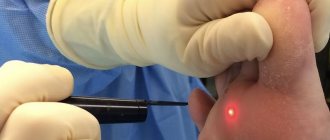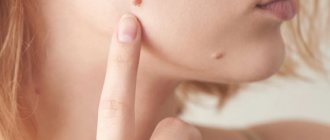Author Rina Miro
08/31/2019 18:10 (Updated: 06/04/2021 12:15)
Health
Warts are usually caused by the human papillomavirus. They come in both flat and pointed forms, and the vast majority are completely safe and benign. Warts are usually treated therapeutically with the use of antiviral and immunostimulating medications.
Garlic
In order to avoid troubles, any treatment, including warts, must begin with diagnostic and laboratory examinations. In the case of warts, it is necessary to exclude the poor quality of skin formations, and then proceed to the choice of treatment method.
Useful properties of garlic
The medicinal properties of garlic are explained by the presence of ascorbic acid, carotene, B vitamins, as many as seventeen minerals, phytoncides and essential oils.
Vitamins and most microelements contained in the cloves of the plant have a stimulating effect on the immune system. This makes it possible to restrain the multiplication of the papilloma virus in the body for a long time and prevent the clinical manifestation of the disease.
Poor bowel function significantly reduces the body's immunity. Regular consumption of 2-3 cloves of garlic per day prevents the development of fermentation, putrefactive processes in the gastrointestinal tract and the formation of toxins, which indirectly speeds up the process of removing warts.
The use of garlic against warts is based on the presence in its composition of phytoncides and about 100 sulfur-containing components:
- Phytoncides have a powerful antiviral effect, destroying the pathogen that causes growths on the skin.
- The sulfides contained in garlic suppress the development of bacterial and fungal microflora, which, if the wart is damaged, can cause purulent inflammation. Some sulfur compounds in this product can block the growth of benign and malignant tumors.
Therefore, it is advisable to use garlic for warts both as an external and internal remedy.
Recipes for folk remedies with garlic for warts
In the photo, pickled garlic for warts
If you want to get a faster effect, garlic can be combined with other natural ingredients that are also effective against skin growths.
Let's look at how to remove a wart with garlic using the following combined recipes:
- Ointment with lard . One of the most popular folk remedies for skin growths. You can prepare it as follows: crush the garlic into a puree, mix with softened lard and apple cider vinegar. The mixture proportions are 1:1:4. The ointment is transferred to the formations and secured with an adhesive plaster. Pork lard reduces the aggressiveness of garlic and vinegar, and therefore this compress can be left overnight the first time. Instead of lard, you can use butter in this recipe.
- Castor oil, honey and garlic against warts . To prepare this mixture, the garlic is again finely ground, mixed with honey and then with castor oil. All ingredients are taken in equal proportions. The ointment can simply be worn on the wart, reapplying twice a day, or applied as a compress. Castor oil also softens the garlic, so again, it can be left overnight.
- Garlic flatbread . This recipe requires garlic juice; you can get it by first chopping the vegetable into a pulp and then squeezing it through cheesecloth. The juice is mixed with any flour to form a plastic cake. It is fixed on the growth and left overnight.
- Pickled garlic against warts . A very simple remedy - soak a clove of garlic in apple cider vinegar for a day. Then it is taken out and cut. A fresh cut piece of garlic is applied to the wart and fixed for 20-30 minutes.
- Solution for wiping with aloe . This recipe again requires garlic juice. It is mixed with aloe juice in equal proportions - you can squeeze the latter yourself if you have this flower at home, or you can buy it at the pharmacy. Warts are wiped 3-4 times a day.
The best effect of oral treatment is provided by a combination of garlic with lemon and honey. The product is mild in action, but has a very powerful antiviral effect. For 1 head of garlic, take 1 lemon and 100 ml of honey. The lemon is passed through a meat grinder, the garlic is crushed into a pulp, and melted honey combines the ingredients. The product is infused for 10-14 days in a cool, dark place. Take the medicine three times a day, 1 teaspoon. The treatment course cannot be continued for more than 2 months. If it needs to be repeated, continue no earlier than after 2 weeks.
- See also recipes for folk remedies with wormwood for warts
Treatment options
Removing warts with garlic should not be done when there is inflammation, redness or pain in the area of these growths. In this case, treatment should only be carried out by a dermatologist. If the neoplasms interfere and cause only aesthetic discomfort, then it is worth looking for home and folk remedies on how to remove a wart using garlic.
Only garlic
Using only the cloves of the plant, you can be treated in the following ways.
Method No. 1
The simplest folk remedy is to apply cut plant segments to the papilloma. This method is most often used when you need to remove a wart with garlic on the soles of your feet. To do this you need:
- cut the peeled clove into thin slices;
- apply them to the growth;
- secure with a bandage or adhesive tape;
- leave for 5-6 hours (can be overnight).
The course of treatment should not exceed three weeks. If there are no results after using recipes with garlic, then you need to consult a specialist to rule out malignant degeneration or concomitant infections.
Method No. 2
When deciding whether it is possible to remove a wart with garlic, you should try rubbing it several times a day with fresh plant juice. According to traditional healers, such treatment is lengthy but effective.
If we are talking about the treatment of plantar warts, then the feet must first be steamed in hot water with the addition of baking soda.
Method No. 3
To remove a wart and papilloma with garlic, you should pour 250 ml of boiling water over the peeled and crushed head, wrap it and leave for 45-60 minutes. Lubricate the new growths with this infusion every 6 hours until they disappear completely.
Ointment
For warts on the hands, you can use garlic added to antiviral ointments that are sold in pharmacies. The product must be prepared immediately before applying to the damaged area. To do this, use gruel or juice from plant cloves. For severely hardened growths, medicinal ointments are replaced with regular baby cream.
You can also get rid of warts using garlic pulp by mixing it with tea tree oil. You should first test for an allergy to the drug. The same oil can be used to treat papillomas in between applying garlic ointment, when its use is impossible due to the strong specific odor.
There is another way to remove warts, which requires:
- bake a few cloves of garlic in the oven;
- grind them with a wooden spatula;
- mix with an equal amount of homemade unsalted butter.
Apply the product before going to bed, securing it with a bactericidal adhesive plaster or a piece of cling film. In the morning, remove the ointment with a swab, wash the affected area with soap and wipe dry with a napkin.
Banana-garlic compress
Removing warts and condylomas is possible using banana peels and garlic. To do this you should:
- cut clean banana peel into small pieces;
- place garlic gruel on their inner side;
- apply to the neoplasm and secure with a bactericidal plaster.
The size of a banana piece should be selected so that it covers only a small area of skin affected by the virus. Contact with an intact surface may cause burns.
Continue using compresses until the growth completely disappears.
Garlic with honey
When wondering whether it is possible to remove a plantar wart with garlic, you should try a honey-based compress. To do this, mix 3 parts of fresh garlic juice with 1 part of honey and apply it to the overgrown growths on the skin. This procedure should be done before bed every day until complete recovery.
With added lard
There are several ways to remove warts using garlic and unsalted lard.
- Recipe No. 1. Mix three crushed cloves of the plant with the same amount of lard passed through a meat grinder. Apply the mixture to the papilloma, cover with cling film and secure with a bandage. Change the compress every 8 hours.
- Recipe No. 2. Combine a teaspoon of chopped garlic with the same amount of melted lard or internal pork fat, add 20 ml of 9% table vinegar and mix thoroughly. Apply to the papilloma, secure as in the previous recipe, and leave overnight. The procedure must be carried out until the growth is completely removed.
Vinegar infusion
An effective remedy against warts is garlic-vinegar infusion. To prepare it, take 3 cloves of the plant, add vinegar and leave for 2 weeks. This recipe uses 600 ml of apple cider vinegar.
Soak a piece of cotton napkin with the resulting infusion, apply it to the existing growths, secure and leave overnight. Typically, warts gradually disappear within 4 weeks.
Cake
To eliminate warts, you can make compresses from a mixture of crushed garlic and rye flour, taken in equal proportions. The formed cakes should be applied to the papillomas, fixed with a plaster or bandage and left overnight.
Warts are skin growths, mostly benign, caused by different types of human papillomavirus (HPV).
HPV, getting on the skin or mucous membrane, penetrates the cell and penetrates into the nucleus, where it can remain inactive for a long time. Under conditions leading to immunosuppression, the virus begins to multiply in the nucleus, causing proliferation of epithelial tissue.
At present, it is obviously impossible to achieve a complete cure for HPV infection through monotherapy. However, the therapeutic methods of modern medicine make it possible to inactivate the virus and achieve stable long-term remission [1].
Methods that reliably ensure the removal of warts are the external use of drugs based on salicylic acid (possibly used at home) and cryotherapy prescribed by a doctor. Injection immunotherapy in the treatment of nongenital common (vulgar) warts can be used on large warts that are difficult to treat with other means (Table 1).
Warts occur in 10% of children and adolescents. The age group 12-16 years old is at greatest risk. Girls get warts more often than boys. The peak incidence occurs at 13 years in girls and 14.5 years in boys [4].
It has been established that without special treatment, warts disappear after 2 years in 40% of children [5]. They usually continue to increase in size and may become more resistant to treatment over time [6]. Children with treatment-resistant warts can become active carriers of HPV. In addition, depending on the location, warts can be painful (for example, if they are located on the sole or periungual fold), and can also be perceived as an obstacle to communication if the warts are located on visible areas (for example, the hands or face) [7].
Treatment approaches
Currently, there are different approaches to treating warts, including observation and a combination of several methods to increase effectiveness. The choice of treatment method should be made on a case-by-case basis based on the physician's experience, patient preference, and application of an evidence-based approach. In immunocompromised patients who complain of warts, treatment may not lead to significant improvement, and the warts may be resistant to the drugs used. The two most common methods for removing warts are the use of salicylic acid and liquid nitrogen cryotherapy [8].
Salicylic acid preparations
The Cochrane Central Register of Controlled Trials assessed that topical salicylic acid is a safe and effective treatment for wart removal [8]. In addition, according to the report, there is no information to support the superiority of other methods in terms of treatment effectiveness or fewer side effects. Pooled data from 6 randomized controlled trials indicate a 75% effectiveness of treatment in patients using salicylic acid preparations, compared with 48% in the control group [8]. The manual by J. Sterling et al. [7] Salicylic acid has been named the drug of choice for the treatment of flat warts on the face, plantar warts, and flat and common warts on the hands.
Currently, there are various salicylic acid-based products on the market. Over-the-counter medications contain less than 20% salicylic acid, while prescription medications may contain up to 70% salicylic acid [9]. However, 15-20% salicylic acid is usually enough to cure a wart.
The effectiveness of treatment with salicylic acid preparations, according to various sources [10], is 40-84% (on average 61%). The therapeutic benefits of topical salicylic acid-containing products, both prescription and over-the-counter, are supported by randomized controlled trials [11–14]. The use of salicylic acid preparations is considered first-line therapy in the treatment of nongenital common warts (Table 2)
[9].
In the Russian pharmaceutical market, among over-the-counter drugs based on salicylic acid, Collomak
, produced in the form of a liquid varnish with a shaving brush lid.
Collomak
is a modern multicomponent drug that contains active ingredients: keratolytics - salicylic (20%) and lactic (5%) acids, emulsifier polidocanol 600 (2%), as well as special fillers that form the basis of the varnish dosage form - a film-forming substance ( ethylcellulose 5.5%), plasticizer (dibutyl phthalate 1%), solvents (acetone 6.65%).
The polidocanol component of Collomac
also causes sclerosis and obliteration of small veins and arteries at the site of application.
Collomak
applied to a wart or callus, after which the horny layers are easily removed.
If necessary, this treatment is carried out several times. To avoid damage to the surrounding skin when applying Collomac
, it is protected with indifferent zinc paste.
You can protect the surrounding skin with adhesive tape by cutting a hole in the middle. The duration of treatment is determined depending on the effectiveness of the drug. For adults, the maximum dose of Collomac
is 10 ml/day, which corresponds to 2 g of salicylic acid, for children - 1 ml, which corresponds to 0.2 g of salicylic acid.
It is not recommended to exceed the indicated dose and treat several areas of the skin and mucous membranes at the same time. During pregnancy, the use of Collomak
is permissible only when applied to a limited surface (no more than 5 cm).
When using the drug in the maximum daily dose in adults and children, the duration of treatment should not exceed 1 week. Positive experience with the use of Collomac
allows us to recommend this drug for widespread use in gynecological and dermatological practice in the treatment of warts and genital warts [1].
Cryotherapy
The effectiveness of cryotherapy treatment varies widely depending on the treatment regimen. As a rule, the wart is frozen for 10-30 seconds until a ring 1-2 mm thick forms around the frozen ball of the treated area. The maximum effectiveness of therapy is achieved when treated at intervals of 2-3 weeks. A positive result of therapy lasting more than 3 months is not documented [10, 11]. The best rate of effectiveness in the treatment of plantar warts was achieved when cutting off the hyperkeratotic surface and using two freezes with intermediate complete thawing [11, 13]. For common warts not located on the palms or soles, it is preferable to use one-time freezing [9]. One scientific report recommends the use of cryotherapy as first-line therapy for the treatment of flat and simple warts [7].
Cryotherapy is also offered as second-line therapy for flat and simple warts on the face [7]. A report by R. Brodell et al. [9] Cryotherapy is proposed as an effective treatment for simple and plantar (cutting with two freezing cycles) and flat warts. According to a report from the Cochrane Central Register of Controlled Trials [8], cryotherapy is not superior to topical medications for nongenital common warts.
Laser therapy
With the help of laser therapy, it is possible to influence the hemoglobin of red blood cells contained in the blood vessels of the wart. In this case, thermal energy is extrapolated to adjacent tissues, which leads to coagulation of blood vessels. As a result of the procedure, a necrotic area with a wart remains, which is easily rejected [15]. Studies examining the effectiveness of laser therapy after 2-3 sessions show a positive result in 48-83% of cases for warts located on different parts of the body [16, 17].
In addition to physical destruction, lasers have a toxic effect on HPV, but the recurrence rate for this method is quite high - 4-22% [18]. K. Robson et al. [19] in a prospective randomized study showed that the effectiveness of laser therapy and conservative treatment methods is comparable. The use of laser therapy is recommended as second-line therapy for plantar warts and third-line therapy for common and flat warts [9].
Immunomodulators and antiviral drugs
The main mechanism of action of drugs in this group (imiquimod, kagocel) is the ability to induce the production of late interferon (IFN; a mixture of α-IFN and β-IFN), which has high antiviral activity. For chronic viral infections, they are recommended to be prescribed simultaneously with external therapy.
J. Sterling et al. [7] do not consider the available information on the use of imiquimod to be sufficient to recommend this drug for the treatment of nongenital common warts.
Cytotoxic drugs
The mechanism of action of cytotoxic drugs (bleomycin, podophyllotoxin) is based on inhibition of DNA synthesis of cells and viruses. Cytotoxic drugs are an alternative treatment for warts that do not respond to other treatments or are difficult to remove surgically. The pain of treatment (especially with bleomycin) is the main limiting factor in the use of this method. Possible side effects include scar formation, pigmentation, nail damage, and Raynaud's phenomenon (bleomycin) [20].
According to the report of the Cochrane Central Register of Controlled Trials, there is no statistically significant evidence of the effectiveness of intralesional bleomycin in the treatment of non-genital common warts, and the available data cannot be generalized for analysis [8]. However, R. Brodell et al. [9] based on 4 randomized controlled trials and a number of case series studies provide evidence of the effectiveness of bleomycin and recommend it as third-line therapy for simple and plantar warts.
Retinoids
Systemic retinoids are used to treat warts due to their ability to influence keratinization processes, which speeds up wart removal [21].
J. Sterling et al. [7] provide compelling evidence for the effectiveness of topical retinoids in a prospective case series study and a limited number of trials of systemic retinoids. R. Brodell et al. [9], based on a series of case studies, recommend oral and topical retinoids as second-line therapy for the treatment of flat warts.
Injection immunotherapy
Injectable immunotherapy relies on the ability of the immune system to recognize specific viral and fungal antigens. A skin antigen test for Candida is commonly used. It is generally accepted that delayed-type hypersensitivity reactions caused by these antigens increase the immune system's ability to recognize and eliminate HPV. In a study by M. Clifton et al. [6] showed complete (100%) removal of warts in 47% of patients and 75–99% removal of warts in 13% of patients. In 34% of those participating in the study, complete removal of all warts distant from the injection site was noted. In 22% of study participants, the effectiveness of therapy was 75-99% for warts located at a considerable distance from the injection site. No cure of warts in distant areas was observed with the use of other drugs.
S. Johnson et al. [22] analyzed the removal of warts by administering Candida and mumps antigens and compared their effectiveness with that of cryotherapy. Complete removal of warts was achieved in 49% of cases in those treated with mumps immunotherapy and in 70% of cases in those treated with Candida antigen immunotherapy, while the same figure for cryotherapy was 42%. The most common side effect was itching at the injection site [6]. A flu-like condition lasting less than 24 hours and improving with non-steroidal anti-inflammatory drugs was also noted. The high therapeutic efficacy of injection immunotherapy indicates that it is a promising method for the treatment of warts, although it requires clinical trials and safety assessment. R. Brodell et al. [9] recommend injection immunotherapy as second-line therapy for plantar warts and third-line therapy for simple and flat warts.
Conclusion
The drugs of choice for external treatment of HPV are currently salicylic acid-based products. Modern combination drugs, such as Collomac
, allow you to increase the effectiveness of treatment using salicylic acid, while maintaining a high level of safety. In addition, it is important that such treatment is safe and inexpensive. Other methods can be used for individual intolerance to salicylates, as well as as part of combination therapy.
Side effects
Despite the good results, treating warts with garlic has certain side effects and limitations:
- a strong specific odor that makes it difficult for a person to stay in public places;
- risk of burns if the application time or concentration of the drug is exceeded;
- the duration of the course of treatment is at least two weeks.
If, after using garlic products, pain or discomfort occurs in the area of the tumor, you should stop applying them and consult a dermatologist.
How to get rid of warts with garlic?
Garlic is an independent remedy; using only this one component, you can quickly and effectively remove formations. However, you need to understand that this remedy is not suitable for removing growths in sensitive areas, but garlic is indispensable for warts on the hands and feet.
External treatment should be carried out in 3 stages: steaming out growths, protecting healthy skin, applying a medicinal composition.
Let's look at how to remove a wart with garlic step by step:
- Pour hot water (at a tolerable temperature) into a basin, add 5 drops of tea tree ether and 1 glass of rosehip infusion per 1 liter.
- Place your hands or feet in a basin and steam for 20 minutes.
- Treat warts: use a soft pumice stone to remove the top layer of the growth - act carefully; if the formation is damaged, be sure to consult a doctor.
- When the growth dries, coat the skin around it well with a rich cream - this is an important condition for protecting a healthy epidermis.
- Apply garlic juice to the wart using a cotton swab or its pulp. Secure the latter with adhesive tape. Treat with juice 2-3 times a day, wear the compress for 30 minutes during the first procedure, then gradually increase the time.
For oral treatment of warts with garlic, the folk remedy is usually not used in its pure form, but many naturopaths recommend consuming the product directly by the clove on an empty stomach and at night. Official medicine has an ambiguous attitude towards this practice.
Contraindications for use
Preparations and methods for removing warts using garlic have a number of contraindications, among which it is worth highlighting:
- mechanical damage to the skin in the area of growths;
- allergic reactions to drug components;
- inflammation in the affected area.
Since the appearance of neoplasms is caused by a virus, to suppress its development it is recommended to include at least one clove of garlic in your daily diet. But this cannot be done in the presence of ulcerative lesions of the stomach and intestines, during lactation, or with exacerbation of pathologies of the liver and pancreas. Therefore, any independent treatment must be previously agreed with a medical specialist.
Contraindications and possible side effects
Removing warts at home is an event fraught with negative consequences, including chemical burns. Before removing the growth, make a hole in the adhesive plaster to match the size of the growth and stick it on the skin. Will allow you to protect healthy areas from the effects of the active components of the product.
Removing warts from the skin with garlic extract is not recommended for people with personal intolerance to the substance in order to avoid the development of an allergic reaction. Do not apply the product to the dermis if there are scratches, cuts or microcracks. The juice has an irritating effect. The person will feel a burning sensation and the skin will become inflamed. Danger awaits people with skin diseases - dermatitis, psoriasis, infectious diseases that manifest themselves in the form of a rash.
Removing condyloma and warts yourself is a last resort and should be done by a doctor. Before using traditional methods of therapy, it is necessary to obtain the approval of a specialist. You need to carefully prepare, study the methodology for carrying out medical manipulations, treating the wound after removing the mark. If you remove it yourself, you can infect healthy skin and get a scar. The doctor will tell you about the features of treatment of ordinary formations and plantar, flat types of warts. Don't skip going to the dermatologist. Paying attention to your health will save your life if papillomas conceal oncology.
The article has been reviewed by the site editors
Causes of plantar warts
Plantar warts are caused by human papillomavirus (HPV) infection of the foot. The main route of transmission is contact; infection occurs through shared objects or directly from person to person. A favorable environment is warmth and humidity, so it is important to take precautions when visiting a bathhouse, swimming pool, sauna and gym.
The cause may also be a weakened immune system, since in normal conditions the human papillomavirus does not give visible manifestations.
This type of wart can also occur due to microtrauma of the epidermis, dry skin, wearing tight, uncomfortable shoes, or hyperhidrosis. Also, the causes of warts on the foot can be diseases that lead to deformation of the feet - arthritis of the joints, osteoarthritis, flat feet, as well as diseases that lead to disruption of the integrity of the skin of the foot: diabetes mellitus, varicose veins. It must be remembered that frequent stress can indirectly affect the occurrence of this disease.
HPV can be acquired accidentally by simply walking barefoot on an infected surface, and the virus can live for up to several months without a direct host. After entering the body, it may not manifest itself for several days or even weeks, which is why it is not always possible to accurately determine the time of infection.
